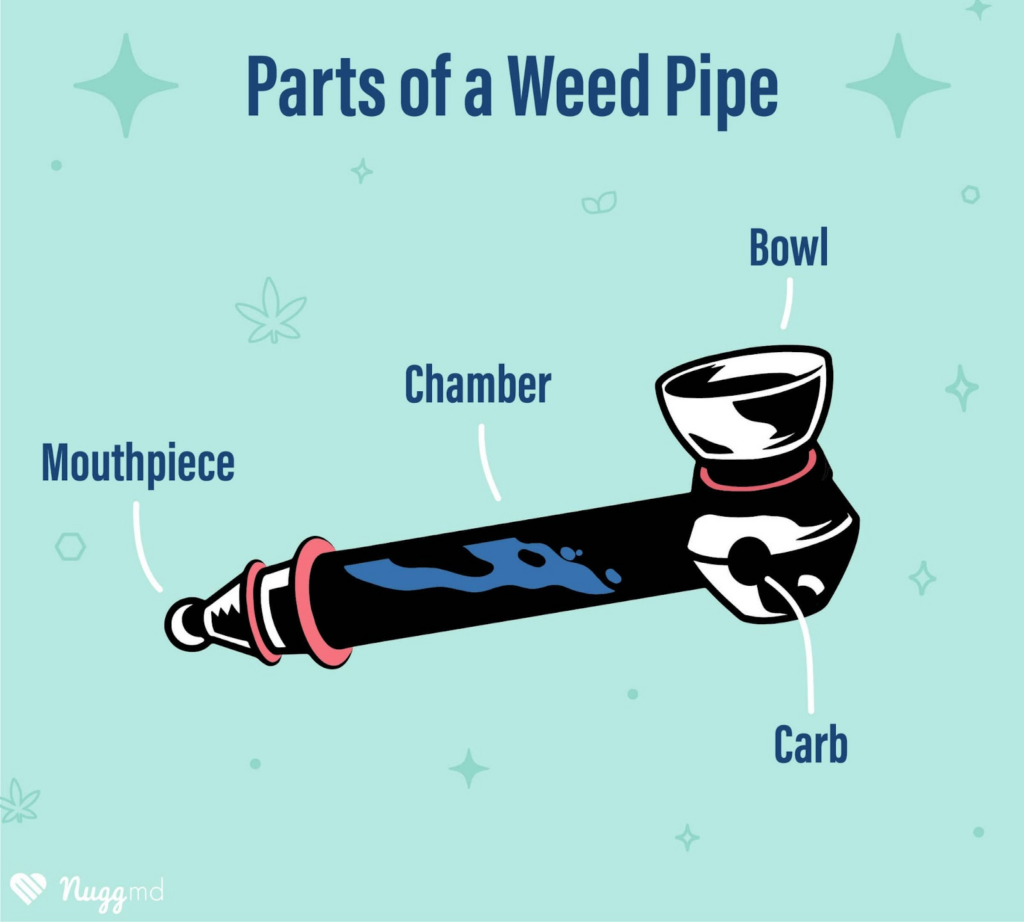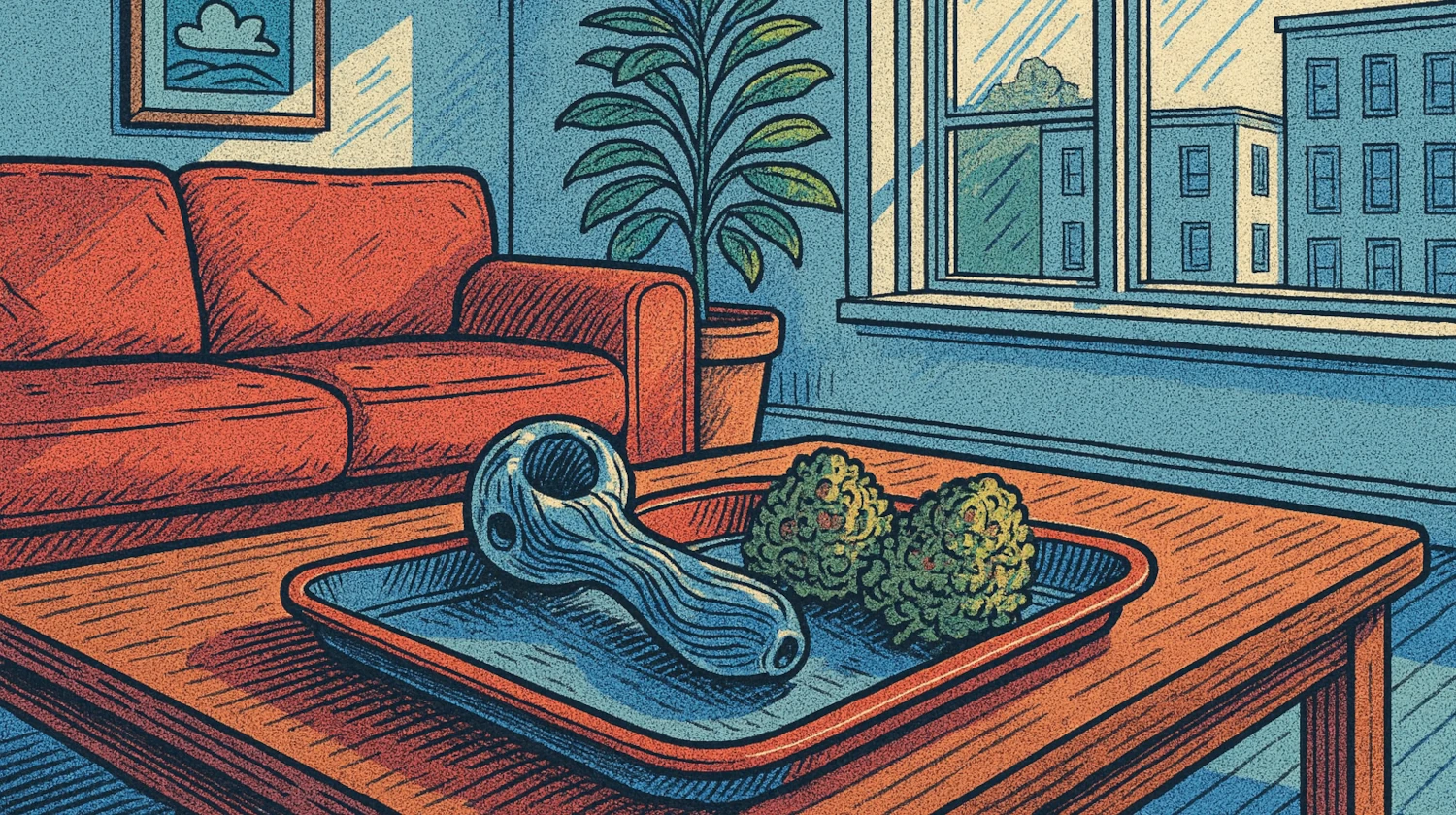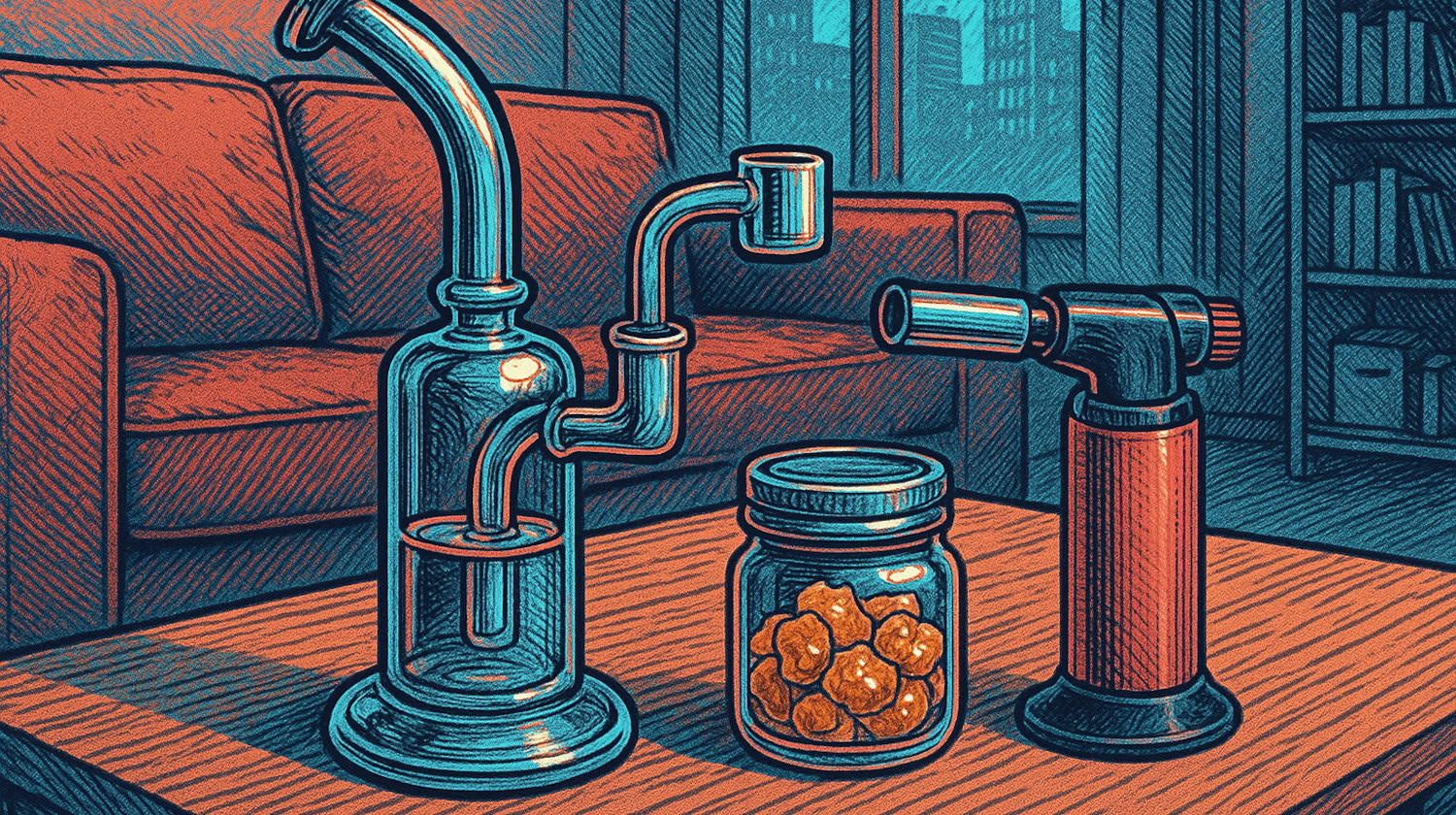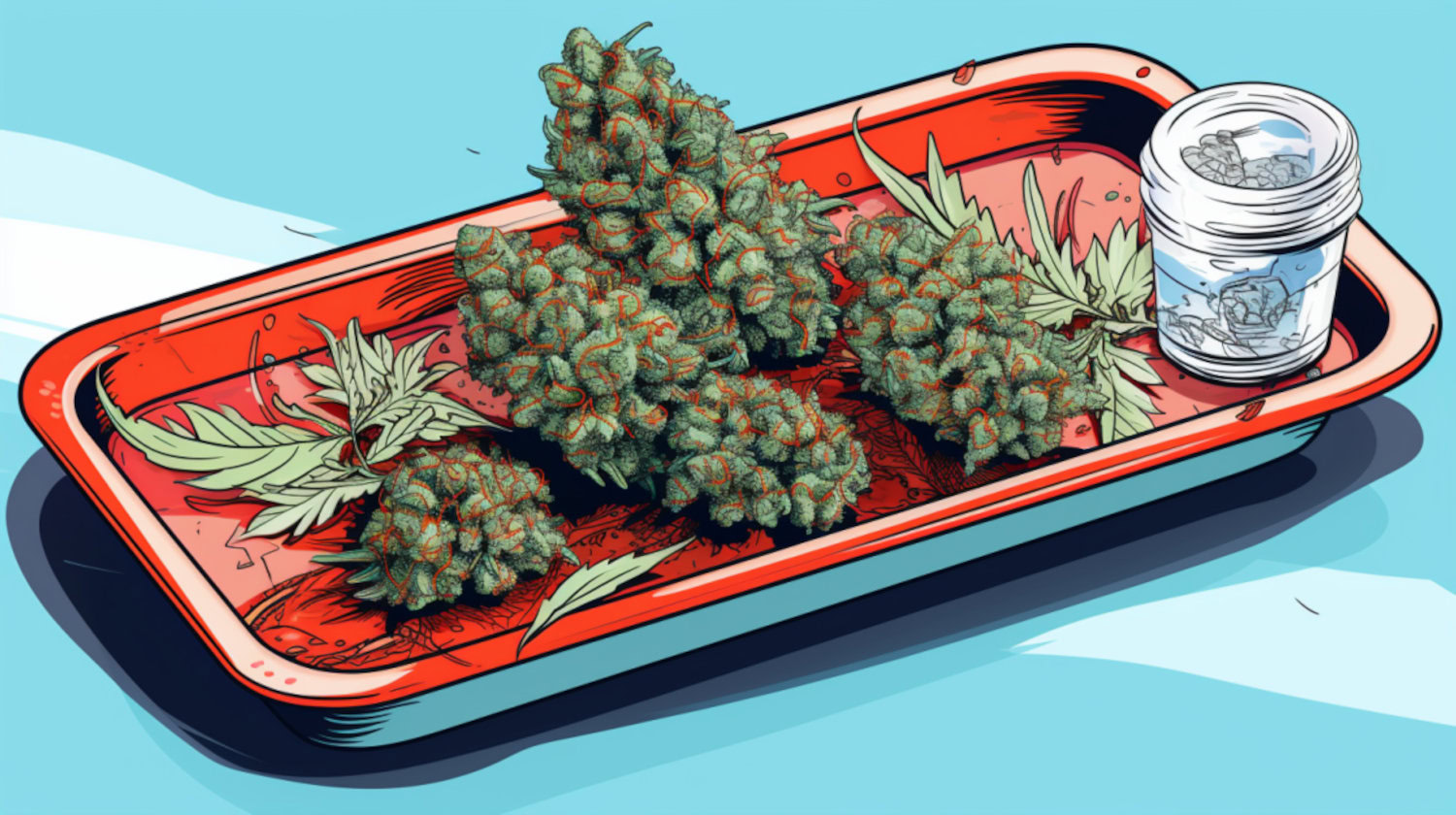It’s almost a right of passage to learn how to consume cannabis out of a bowl or pipe. If you consume cannabis flower regularly, having a pipe in your tool kit is a great way to get a convenient, easy, flavorful experience.
While the basic framework remains the same for each piece, there are hundreds of different designs, styles, and materials they can be made of. And the extensive selection can be overwhelming, especially if it’s your first time shopping for a pipe.
The great part is that there is no right answer, and which pipe you choose is a matter of personal preference. This guide will break down a few basic styles of pipes, how to use them, and cleaning tips to help make choosing the right one for you easier.
What is a Weed Pipe?
A weed pipe is a tool used to smoke dry cannabis herb. Although bowls can be topped off with concentrate, they are not designed to smoke concentrates only (that requires a dab rig or specialized vape).
A pipe has a bowl, a chamber, a mouthpiece, and a carb (although some pipes may not have one). The only other tools you need are a lighter and a grinder.

Smoking out of a pipe is relatively straightforward. You pack ground-up dry flower into the bowl, place your mouth on the mouthpiece, cover the carb hole, light the lighter, and put the flame to the flower while simultaneously inhaling.
Pipes are convenient ways to smoke flower that are faster to prepare than rolling a joint and typically require less cannabis since you can pack what you need (instead of loading up a paper that may be too much to smoke on your own). Although joints may be better for longer sessions or sessions with multiple people smoking, pipes are better for shorter sessions. Rolling papers used for joints may also alter the flavor and experience of the smoke, whereas pipes offer a more direct experience where the taste of the cannabis can shine through.
What are the Different Weed Pipe Types?

Pipes can be found in specialized stores referred to as ‘head’ shops,’ ‘smoke shops,’ or ‘glass shops.’ If you’re heading into a store to purchase one, there are a few types of weed pipes to be familiar with as you browse. And each offers its pros and cons.
One Hitter
As the name suggests, this type of pipe is designed for a single ‘hit’ or inhale of dry cannabis flower. These pipes won’t have a carb hole, just a mouthpiece and bowl. There are two common styles.
- Chillum. This single-barrel pipe is usually made of glass or metal. The cannabis material is ‘packed’ or loaded into the bowl at the end of the barrel. Inhale through the mouthpiece as you place the flame in the bowl.
- Dugout. This is both a pipe and a carrying device. The dugout has two compartments, one for the one-hitter pipe and the other for dry flower. You tamp the pipe in the flower chamber to load it, take a hit, and place it back on its designated side.
Spoon
This style is the most common and can be made from many different materials (most often glass). The spoon pipe is shaped like a soup bowl and is designed to fit enough flower for multiple hits. While you don’t have to share, the pipe is typically large enough to allow two or three people to participate in the smoke session. It has a carb hole to control airflow.
Hammer
These pipes are shaped like a hammer, or T, and look like a ‘cobb’ style pipe. They are similar to a spoon pipe in that they can hold a decent amount of flower and have a carb hole to control airflow.
Steamroller
Many consumers choose to bring this pipe out for social sessions. The design is said to hit like a bong, making a single hit potent enough for the average user. There is a carb hole, and these pieces are usually made of glass.
Sherlock
As a novelty-style pipe, this one is shaped like the ones you may have seen the fictional character Sherlock Holmes smoke out of. This style resembles the classic spoon pipe with a bowl and carb hole but with an extended, slightly arched chamber.
Bubbler
Bubblers look like a combo of Sherlock and spoon pipes but with the water chamber of a bong. These pieces require water to be poured into the chamber to cover the downstem slightly. How much water you need will depend on the size of the bubbler. These pieces are great for groups or solo sessions but are less portable than other styles.
Foldable
A pipe for the smoker on the go. They work similarly to the spoon pipe with all the same features, but they usually hinge in the middle to be stored away discreetly.
Stealth
Stealth pipes, sometimes called ‘hidden’ pipes, are usually disguised as more socially acceptable items like cigarettes, pens, and flashlights for discreet, mobile smoking.
A lighter is the only tool you’ll need with all these weed pipe types. To smoke out of one of these pieces, you’ll need to pack the bowl and place your mouth on the mouthpiece. Then simultaneously light the bowl with a lighter while slowly inhaling.
How to Choose the Weed Pipe for Your Needs

Most styles of pipes can be made from a variety of different materials, most commonly glass, metal, silicone, wood, or clay. The type of material the piece is made from will determine the steps needed to keep your pipe clean. Likewise, some materials are more resilient than others (something to keep in mind if you have had to replace broken glass pipes or bongs in the past). Some consumers worry that certain materials may interfere with the flavor profile of their chosen strain, so it’s worth trying different materials until you find one that looks, feels, and smokes the way you like.
Pipe sizes will also vary greatly. In general, most should fit comfortably in the palm of your hand. Consider if you will be using this pipe at home or bringing it with you on the go (and choose your size and pipe style accordingly).
Beyond size and material, pipe colors and designs are endless, so you can find one to fit your needs and aesthetic. Choose one that suits the needs of your average session. Buying a steamroller or bubbler is unnecessary if you only need one or two hits or you need something you can easily use on the go.
While most consumers have one pipe in their cannabis toolkit, it’s common to have a few on hand. This can be especially useful in case one breaks or is in need of cleaning.
How to Use the Weed Pipe
All styles of pipes are smoked the same way.
- Break the weed down. You can do this using a grinder or by hand. Either way, you’ll want it to be broken down into pieces small enough that the cannabis packs into the bowl and creates an even surface. This makes the inhale much smoother, and you’ll need to burn less material to get a great flavorful hit.
- Pack the bowl. Pack as much cannabis as you like, but try not to overflow the bowl. You’ll want the cannabis packed firmly but gently to allow for airflow.
- Light and inhale. Place the pipe comfortably in one hand, with your thumb or index over the carb hole (if there is one). With the lighter in the other hand and your mouth on the mouthpiece, put the flame to the bud and gently inhale. *If your pipe has a carb hole, remove your finger on and off the carb hole to control the airflow. The bowl may stay ‘cherried’ or lit in between hits allowing you to come back to it or pass it to the next person who won’t have to light it.
Pro tip: Try to ‘corner’ the bowl to use less cannabis and allow for a smoother, more controlled hit. In other words, place the flame to a small portion on the edge of the bowl instead of lighting the center of the bowl.
- Exhale. Repeat as desired until the bowl is ‘cashed’ or wholly turned to ash.
- Clear and clean. When you’re finished, dispose of the ash. The resin will start to build up in the bowl and chamber. Pipes should be cleaned regularly. This can be done after each session (ideally), but once a week is fine. Less frequent cleaning can lead to clogs and the buildup of unwanted bacteria.
How to Clean and Store the Pipe After Use
Cleaning is an essential part of maintenance when owning pipes. Each session builds resin and ash in the bowl and chamber, which can lead to harsher hits that also affect the flavor of each new sesh.
While dry pipes won’t develop mold as easily, bubblers that require water can do so quickly. Whatever type of pipe you prefer, you’ll want to have a routine for cleaning at least once a week (if not after each new bowl is cashed).
The following cleaning process is for a glass pipe. Bubblers and other materials may require special consideration.
You’ll need the following:
- Coarse salt
- Isopropyl alcohol (70-99%) – don’t use “rubbing” alcohol, since it contains additives that can leave a residue you wouldn’t want to smoke.
- A Ziploc bag
Steps to clean your pipe:
- Place the pipe into the Ziploc bag. Depending on the size of the bag and pipe, you may be able to fit more than one in.
- Pour in enough alcohol to cover the pipe (and then a little more).
- Pour in a few tablespoons of salt.
- Close the bag tightly.
- Gently move the pipe around the mixture, allowing the salt into the mouthpiece, bowl, and chamber. This helps scrape the resin off the pipe.
- Let it soak. How long you soak the pipe is up to you and may depend on how dirty the pipe is. It can be left for a few hours or a whole day.
- Give the bag a gentle shake, then remove the pipe or pipes.
- Rinse the pipe(s) thoroughly with water and dispose of the bag with the residue.
- Let the pipe dry. Smoking wet cannabis is difficult and undesirable.
The information in this article and any included images or charts are for educational purposes only. This information is neither a substitute for, nor does it replace, professional legal advice or medical advice, diagnosis, or treatment. If you have any concerns or questions about laws, regulations, or your health, you should always consult with an attorney, physician or other licensed professional.




